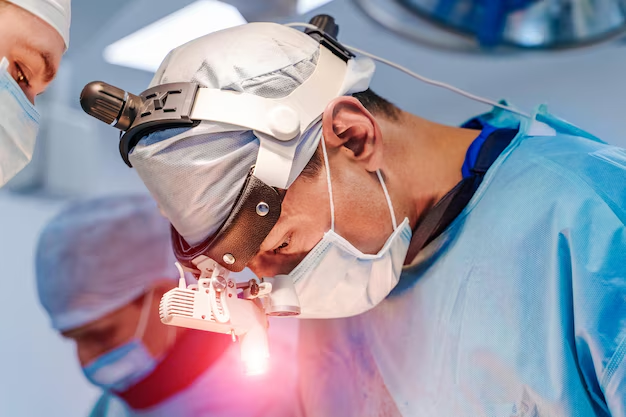Understanding Anesthesia in Cataract Surgery: A Comprehensive Guide
Cataract surgery is one of the most common and successful surgical procedures worldwide. If you or someone you know is facing cataract surgery, you might be wondering if you’ll be put to sleep for the procedure. This question is entirely valid and one that brings comfort to know before stepping into the operating room. Let’s explore how cataract surgery is typically performed, what types of anesthesia are used, and what you might expect before, during, and after the surgery.
What is Cataract Surgery?
A cataract is a clouding of the eye's lens that affects vision. It's prevalent among older adults but can also occur in younger people due to other health factors. The only effective treatment for cataracts is surgery, where the cloudy lens is replaced with a clear artificial lens, enhancing vision dramatically.
Types of Anesthesia Used in Cataract Surgery
While the idea of any surgical procedure can be daunting, cataract surgery is relatively straightforward and requires only a short time to perform. When we talk about "being put to sleep," we're referring to general anesthesia, but cataract surgery typically involves local anesthesia.
Local Anesthesia
Eye Drops or Injections:
- Most cataract surgeries use local anesthesia, meaning the area around the eye is numbed while you remain awake. Anaesthetic eye drops are often sufficient, rendering the eye insensitive to pain.
- In some cases, an injection may be administered around the eye to further ensure comfort.
Benefits:
- Faster recovery time compared to general anesthesia.
- Minimal risks associated with anesthesia as your body and brain remain functional and unaffected by strong anesthetics.
Sedation
- Intravenous Sedation:
- Occasionally, light sedation might be offered to help calm nerves. This is administered through an IV and doesn't put you to sleep completely but helps you relax.
- It’s often referenced as “twilight” anesthesia, keeping you comfortable and at ease without loss of consciousness.
General Anesthesia
- General anesthesia is rarely used in adult cataract surgery. It might be recommended in extraordinary circumstances or where patients cannot cooperate or have other medical conditions that necessitate full unconsciousness.
Procedure Overview
Understanding what happens during cataract surgery can further alleviate anxiety about anesthesia and the process itself.
Before the Surgery
- Preparation:
- Your doctor will discuss various options and the type of anesthesia best suited for your situation. You may be asked to avoid certain medications or food before surgery.
- On the day of surgery, the anesthetist might apply numbing drops followed by sedation if required.
During the Surgery
- Procedure:
- You remain comfortably reclined as the surgeon makes a tiny incision to remove the cataract and implant the new lens.
- Monitoring: You are awake but might not be aware of much beyond the surgical drape and lights.
After the Surgery
- Recovery:
- You’ll rest in a recovery area for a short time. Effects of sedation diminish quickly, allowing many to return home the same day.
- Post-op instructions will provide guidance on eye care and activities to avoid in the coming days.
Key Considerations for Anesthesia in Cataract Surgery
Factors Influencing Anesthetic Choice
- Patient’s Health Status: Current medical conditions or medications can influence the type of anesthesia.
- Patient Comfort and Preferences: Some patients prefer sedation for anxiety, which can guide anesthetic decisions.
- Surgeon’s Recommendation: Based on an assessment, the surgical team will guide the best and safest approach for each individual.
Safety and Risks
- Local Anesthesia: Known for being extremely safe with minimal side effects.
- Sedation: Risks are mild and usually monitored closely; a thorough evaluation ensures it's suitable for the patient.
- General Anesthesia: Although rarely used, it’s safe when necessary for specific cases, but it comes with the standard considerations of full anesthesia.
Benefits of Local Anesthesia in Cataract Surgery
- Swift Recovery: Because it doesn’t impact consciousness or the functioning of your body overall, recovery is swift, typically within a few hours.
- Minimal Side Effects: Avoiding the grogginess and potential nausea associated with general anesthesia.
- Efficiency: Surgical centers often perform multiple procedures in a day due to the brief operation time.
- Patient's Autonomy: Many patients value being awake and aware of their surroundings, providing a sense of control.
FAQ: Your Cataract Anesthesia Questions Answered
Can I Choose the Type of Anesthesia for My Surgery?
While preferences can be discussed, the final decision typically rests with the surgical team’s assessment of what is safest and most effective for your situation.
How Will I Feel During the Surgery?
You may feel slight pressure around the eye area but should not experience pain. Sedation ensures you are relaxed and possibly uninvolved in the sensation entirely.
Is it Safe for Older Adults?
Yes, local anesthesia with light sedation is very common and safe for older adults, given proper pre-surgical screening by the healthcare team.
What Should I Do if I Feel Anxious?
Discuss these concerns with your ophthalmologist and anesthetist. They can adjust sedation levels or offer reassurance to ensure you remain comfortable throughout the procedure.
Summary: Key Takeaways for Cataract Surgery Anesthesia
Here's a quick summary to keep in mind if you're preparing for cataract surgery:
- 🛌 Awake Comfortably: Local anesthesia is most common; you’re awake, but your eye is pain-free.
- 😌 Stay Relaxed: Optional sedation can be provided for comfort and anxiety.
- 🔬 Focus on Recovery: Fast and effective recovery with minimal side effects.
- 📚 Consult Experts: Discuss any fears or health concerns to tailor the anesthesia plan best suited to you.
Undoubtedly, cataract surgery can seem daunting, but understanding the anesthesia involved truly demystifies the process. With modern surgical techniques and careful anesthetic planning, most patients find the procedure and recovery to be smooth and manageable. Embrace the process with knowledgeable insights and the calming reality that you’ll remain comfortably aware but blissfully pain-free.
